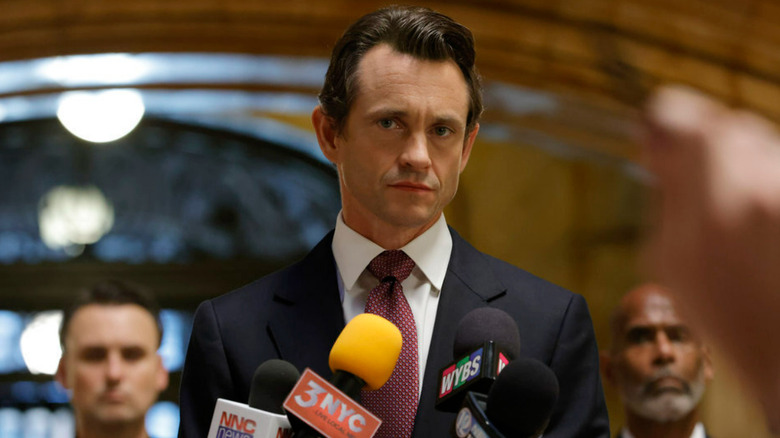Hugh Dancy Learned To Appreciate Law & Order's Familiar Structure
"In the criminal justice system, the people are represented by two separate, yet equally important groups: the police who investigate crime and the district attorneys who prosecute the offenders." That simple introduction has been at the beginning of every episode of the original "Law & Order" since its debut all the way back in 1990. And with that intro, the show spells out its simple formula: roughly the first half of the episode is dedicated to the police, while the second half is devoted to prosecutors.
In fact, according to The Washington Post, when the show was first sold to NBC, creator Dick Wolf had the intention of syndicating the two halves of the series separately, which never ended up happening. In the same article, TV writer Megan Ganz explained that part of what makes the franchise so successful is the formula. "The human brain loves patterns," Ganz said, adding, "There's something about the procedural structure that feels, for lack of a better word, orderly."
Wolf, in an article for Variety, compared the "Law & Order" brand to Campbell's soup, saying, "[It's] my hope that viewers are comfortable with the brand, and they know no matter what type of soup they are buying, or show they are watching, they know they are getting a high-quality product."
Actor Hugh Dancy joined the original "Law & Order" cast in 2022, one season after it was revived at NBC. To Dancy, the formula is one of his favorite parts of working on the show.
Hugh Dancy enjoys the constraints of Law & Order's structure
In an interview with Collider, Hugh Dancy talked a little bit about how he came to recognize the structure of a "Law & Order" episode over time and how that familiar formula makes the show successful. He also said that the constraints of the structure were, surprisingly, helpful to him. "To my surprise, I've ended up really quite enjoying all the limitations that imposes," he told Collider. "You've got to find shape, space, and color within those defined boundaries." So, for Dancy, finding a way to flourish under such rigid constraints is actually a welcome acting challenge.
Not every edition of the "Law & Order" franchise has kept to the original show's formula. "Law & Order: Criminal Intent" rarely featured scenes in a courtroom. The short-lived "Law & Order: Trial by Jury" followed a variation on the original formula in which more focus was paid to the prosecutors and less to the police officers. "Law & Order: Special Victims Unit" didn't have its own prosecutor in Season 1, but that was changed in Season 2 when ADA Alex Cabot (Stephanie March) was introduced into the show. Adhering closely to the original show's formula, "SVU" has become the only show in the franchise to produce more seasons than the original "Law & Order." So it would seem that "Law & Order" is most successful when it follows the original formula that made it a hit in the first place.

